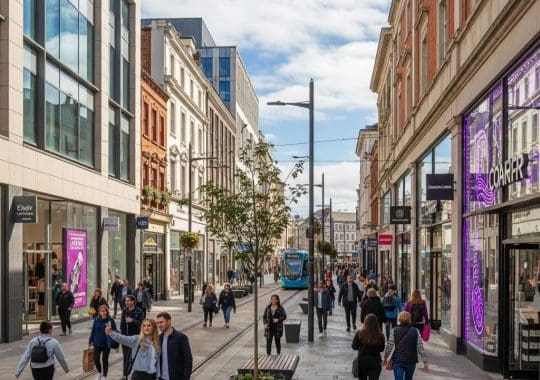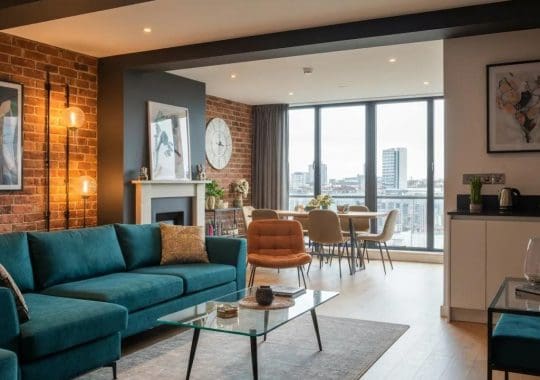Elevating Cardiff Architecture with Augmented Reality
Augmented Reality is revolutionising project visualisation in Cardiff by seamlessly blending digital designs with real-world sites. This approach cuts through the confusion often caused by flat plans and static renders. This article explores how AR, a trusted tool for Cardiff’s architecture professionals, enhances client understanding, streamlines team collaboration, and drives tangible results. We’ll start by defining AR for project visualisation in Cardiff, then delve into its communication advantages, practical benefits, real-world applications, and future possibilities. Finally, we’ll guide you on selecting the right AR partner and what questions to ask to ensure a smooth implementation and lasting success.
What Exactly Is Augmented Reality for Project Visualisation in Cardiff?
Augmented Reality for project visualisation in Cardiff merges computer-generated 3D models with live camera feeds, offering architects, developers, and clients an accurate sense of scale and context. By superimposing virtual elements onto physical surroundings, AR bridges the gap between design intent and the actual site, reducing guesswork and enabling smarter decisions.
Augmented Reality in the Field of Architecture
Augmented Reality (AR) empowers architects and clients to visualise how designs integrate with the real environment, significantly improving comprehension and decision-making. AR also helps identify potential issues before construction commences, saving valuable time and resources.
This insight underscores the advantages of AR in architecture, perfectly aligning with our focus on how AR enhances communication and achieves better project outcomes.
Imagine viewing a new mixed-use development at Cardiff Bay at its full scale, superimposed against the existing waterfront structures. This allows for more persuasive and precise planning submissions.
How Does AR Seamlessly Overlay Digital Models onto Real-World Environments?
AR achieves this by employing computer vision and simultaneous localisation and mapping (SLAM) algorithms. These technologies track the device’s position and anchor virtual objects to physical markers or surfaces. Cameras capture live imagery, while onboard sensors interpret depth information, enabling the software to render 3D assets at the correct orientation and scale. This sophisticated mechanism ensures that a proposed façade aligns perfectly with the pavement or building footprint.
What Are the Core Capabilities of AR in Architectural and Construction Visualisation?
Before we explore practical uses, it’s helpful to understand the key features that make AR so impactful for Cardiff’s built environment sector:
- Instant 3D Placement: Users can position and adjust virtual models in real-time at a true 1:1 scale.
- Interactive Notes: Stakeholders can add comments directly linked to specific design elements for crystal-clear feedback.
- Material and Lighting Previews: Textures, finishes, and natural light simulations can be adapted to reflect actual site conditions.
- Shared Multi-User Sessions: Teams can simultaneously view and interact with the same AR scene from various devices.
These combined features forge a shared visual language that eliminates ambiguity, paving the way for quicker approvals and more efficient construction processes.
Why Is AR Particularly Relevant for Cardiff’s Architecture and Construction Sector?
Cardiff‘s unique blend of historic landmarks and dynamic urban development presents distinct challenges. Strict regulations for listed buildings demand precise visualisations, while new constructions must harmonise with existing heritage. AR assists architects and planners in demonstrating design sensitivity to local conservation bodies and community groups. By visualising proposals against Cardiff’s iconic Victorian arcades or its striking docklands skyline, teams can confidently ensure projects respect the city’s distinctive character, even before construction begins.
How Does AR Elevate Communication for Cardiff Architects and Their Clients?
Augmented Reality fosters superior communication by establishing a shared, interactive reference point that all stakeholders can explore together. This eliminates the misinterpretations that often arise from static drawings or screen-based models, leading to more productive discussions and faster agreement.
In What Ways Does AR Enhance Client Engagement and Understanding?
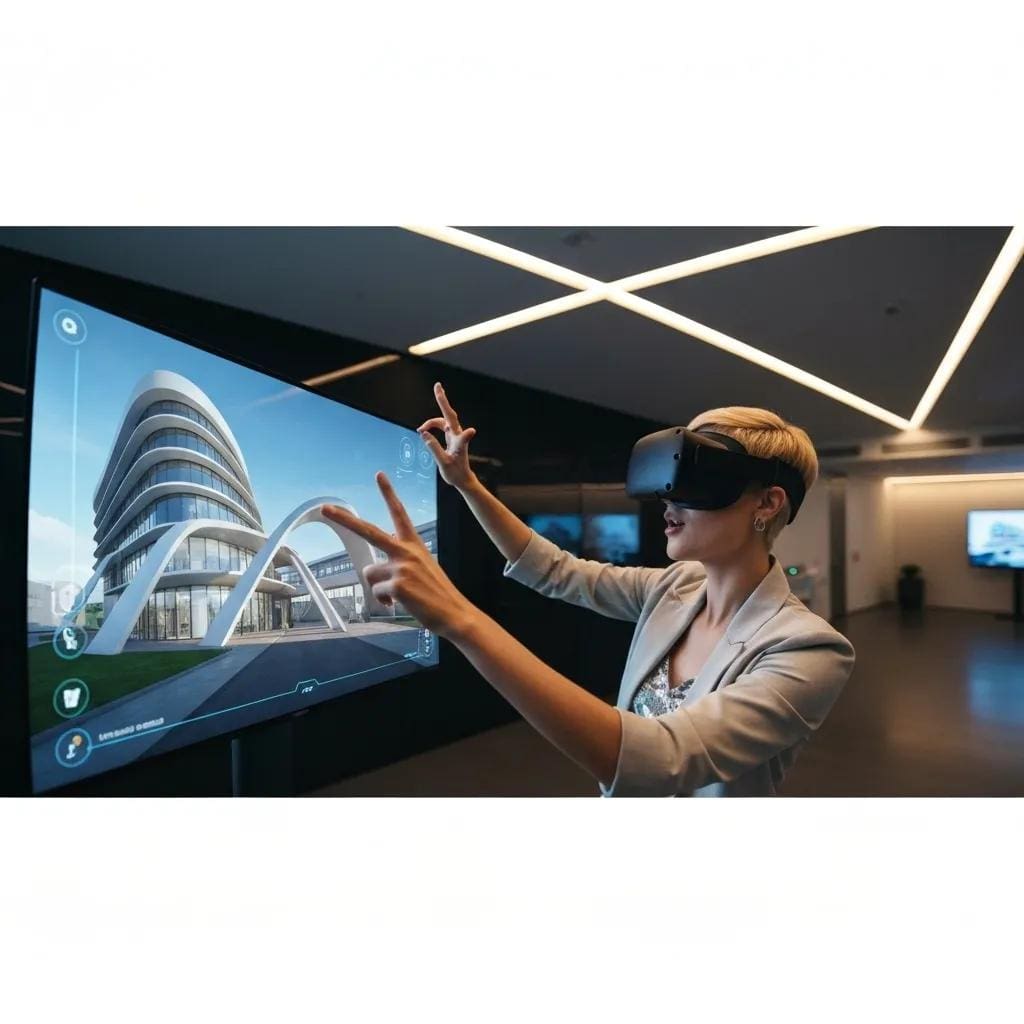
Clients become far more engaged when they can virtually ‘walk through’ a design at full scale, quickly grasping spatial relationships and material choices.
- Immersive Walkthroughs allow clients to experience room layouts and circulation paths as if they were there.
- Real-Time Adjustments enable immediate modifications to colours or layouts, allowing preferences to be tested on the spot.
- Contextual Overlays place furniture, landscaping, and lighting options directly within the existing surroundings.
These deeply engaging experiences empower clients to provide precise feedback and significantly strengthen their commitment from the initial concept through to project completion.
How Does AR Facilitate Seamless Collaboration Among Architects, Engineers, and Developers?
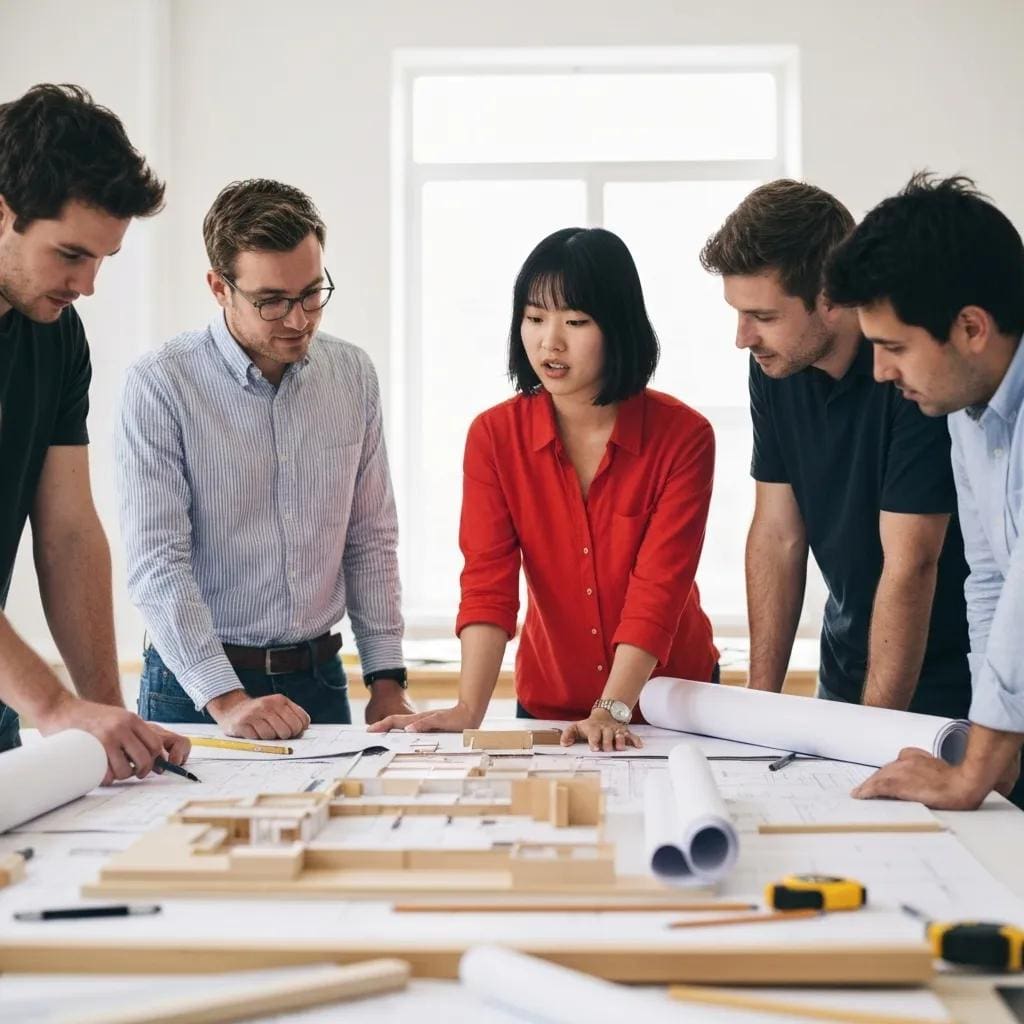
AR synchronises multidisciplinary teams by merging design models with live on-site views, ensuring everyone is working from the same virtual reference points.
- Shared Spatial Markers link annotations to precise real-world coordinates, allowing engineers to verify structural details with confidence.
- Version Control Integration connects AR scenes directly to BIM data, ensuring that any changes are updated across all platforms simultaneously.
- Remote CollaborationSessions enable stakeholders in different locations to review progress together using 5G-enabled devices.
This fluid collaboration minimises translation errors between design disciplines and on-site execution, leading to a more cohesive project delivery.
What Distinguishes AR from Traditional Visualisation Methods in Cardiff?
Comparing AR with conventional renderings clearly highlights its superior advantages in terms of context, interactivity, and precision.
| Aspect | Traditional Rendering | AR Visualisation |
|---|---|---|
| Context | Fixed viewpoint on a static image | Immersive 3D model anchored to the actual site |
| Interactivity | Limited to static views | Real-time model repositioning and interactive walkthroughs |
| Client Feedback | Separate mark-ups on printed documents or PDFs | Integrated annotations directly within the AR scene |
| Approval Speed | Dependent on the client’s ability to interpret 2D drawings | Accelerated by intuitive, spatial understanding |
How Does AR Effectively Reduce Misunderstandings and Streamline Feedback Loops?
By allowing comments to be embedded directly onto virtual elements within the physical environment, AR prevents vague or disconnected feedback. For example, a client’s comment about window placement is attached precisely to the actual window opening in the AR view, guiding immediate and accurate adjustments to the model. This direct link between observation and action significantly tightens feedback loops and speeds up design iterations.
What Are the Tangible Benefits of AR for Project Visualisation in Cardiff?
Augmented Reality delivers measurable improvements in cost efficiency, project accuracy, stakeholder satisfaction, and timeline compression, transforming digital clarity into real-world savings.
How Does AR Help Reduce Errors and Save Costs in Cardiff Construction Projects?
AR identifies potential design clashes—such as conflicts between services or structural elements—before construction even begins, potentially cutting rework costs by up to 20 percent.
The Revolutionary Impact of Augmented Reality and BIM on Construction
The combination of AR and BIM can significantly boost productivity by enabling teams to detect design discrepancies early, thereby preventing costly rework and saving substantial project time. These integrated tools also help teams enhance quality assurance and verify compliance with building codes and project specifications, leading to improved inspection outcomes.
This expert source strongly supports our claims regarding AR’s benefits in construction, particularly in reducing errors and enhancing project accuracy.
Identifying misaligned pipe runs or unexpected obstructions within the AR environment allows for proactive corrections, avoiding expensive on-site fixes.
What Impact Does AR Have on Project Approval Times and Client Satisfaction?
Faster consensus is achieved when decision-makers can clearly see exactly how proposed designs integrate with the existing context.
- PlanningSign-Offs are Reduced from months to weeks by presenting compelling visual evidence.
- Stakeholder Buy-In Increases Significantly through immersive experiences that build confidence and trust.
- Revision Cycles are Dramatically Reduced as AR promotes clarity and minimises ambiguous requests.
These improvements lead to higher client satisfaction and solidify reputations for reliability and innovation.
How Does Real-World Contextualisation Enhance Project Accuracy in Cardiff?
Overlaying digital models at precise GPS or marker-based locations ensures that all dimensions, alignments, and site features accurately reflect reality. This high level of accuracy prevents measurement errors in foundation layouts and façade placements, safeguarding project budgets and maintaining construction quality from the very initial stages.
What Are the Key Applications of AR for Cardiff Architecture and Construction?
AR’s utility spans the entire project lifecycle, from initial client presentations and on-site management to post-completion marketing, enriching each phase with context-rich visualisations.
How Is AR Utilised for Client Presentations and Design Reviews in Cardiff?
Architects can effectively showcase façade options and interior arrangements through immersive AR sessions, inviting clients to explore different materials, lighting scenarios, and views from multiple perspectives. This hands-on involvement significantly accelerates design sign-off and builds client confidence in the proposed concept.
How Does AR Support On-Site Construction Planning and Error Detection?
On-site teams utilise AR on tablets or helmets to meticulously verify measurements, detect potential clashes, and confirm installation sequences:
- Clash Detection flags potential conflicts between Mechanical, Electrical, and Plumbing (MEP) systems and structural elements.
- Dimension Verification ensures that as-built conditions precisely match the digital model.
- Assembly Guidance overlays step-by-step instructions directly at the point of work.
These capabilities effectively reduce downtime, prevent costly errors, and maintain the integrity of the project schedule.
How Can AR Accelerate Property Sales and Stakeholder Engagement in Cardiff?
Introducing a virtual showroom elevates pre-launch marketing efforts by offering an immersive preview of unbuilt spaces. High engagement rates, sometimes reaching up to 94 percent, are driven by interactive tours that allow potential buyers to visualise their own lifestyles and furniture within the planned homes or offices.
Why Do Cardiff Clients Prefer AR for Project Visualisation Over Other Technologies?
Cardiffclients consistently choose AR for its unparalleled ability to seamlessly merge digital designs with real-world environments, delivering a level of clarity and confidence that static renders or standalone VR experiences simply cannot match.
What Unique Challenges in Cardiff Does AR Address Effectively?
Cardiff’s diverse architectural landscape and stringent planning regulations present specific hurdles that AR effectively overcomes by:
- Demonstrating how new designs harmonise with heritage structures.
- Illustrating the environmental impacts of coastal developments with precision.
- Engaging community stakeholders through easily accessible and understandable visualisations.
How Does AR Enhance Sustainable Architecture Visualisation in Wales?
AR effectively highlights sustainable design strategies—such as green roofs or solar panel installations—by overlaying performance data and energy simulations directly onto building exteriors. Stakeholders can visualise projected energy savings and environmental footprints in situ, promoting more responsible and informed design choices.
What ROI Can Cardiff Developers Expect from Using AR Visualisation?
Developers typically achieve a strong return on investment (ROI) through:
- Achieving 15–20 percent savings on project budgets by minimising rework.
- Accelerating sales cycles and increasing pre-sale rates for properties.
- Improving success rates on competitive bids due to superior, impactful presentations.
How to Select the Right AR Project Visualisation Partner in Cardiff?
Choosing an experienced AR provider is crucial for ensuring robust technical integration, valuable local insights, and dependable support throughout the entire project lifecycle.
What Criteria Should Cardiff Architects and Developers Use to Select an AR Provider?
- A proven portfolio showcasing successful AR implementations on Cardiff projects, demonstrating on-site overlay capabilities.
- Seamless compatibility with existing BIM platforms and designsoftware.
- Comprehensive training programs and reliable ongoing technical support services.
- Scalability of both hardware and software solutions to accommodate projects of varying sizes.
Adhering to these criteria ensures that AR implementations meet local standards and deliver consistent, high-level performance.
How Important Is Local Expertise and Integration with Cardiff Technologies?
A partner’s deep understanding of Cardiff’s specific building regulations and their familiarity with local planning authorities can significantly expedite the approval process. Integration with UK-centric BIM workflows and GIS systems ensures that AR scenes align perfectly with council datasets and cadastral maps.
What Questions Should Clients Ask About AR Implementation and Support?
Clients should thoroughly inquire about project timelines, recommended hardware, software licensing models, datasecurity protocols, and post-launch maintenance plans. This ensures a transparent roadmap and guarantees lasting value from their AR investment.
What Are the Most Common Questions About AR for Project Visualisation in Cardiff?
By addressing typical concerns regarding cost, timelines, and technical scope, clients can approach the adoption of AR for their upcoming developments with greater confidence.
What Is Augmented Reality in Architecture and Construction?
Augmented Reality combines live camera feeds with digital 3D content to create context-aware visualisations that significantly enhance design comprehension and on-site precision in building projects.
How Does AR Benefit Cardiff’s Architectural and Construction Projects?
AR enhances spatial understanding, accelerates decision-making processes, reduces errors by up to 20 percent, and elevates stakeholder satisfaction, making it an indispensable tool for local developments.
What Are the Costs and Timeframes for Implementing AR in Cardiff Projects?
Implementation typically involves:
- Initial Setup Costs: Ranging from £5,000 to £15,000 for model preparation and software configuration.
- Pilot Phase: Typically lasting 2–4 weeks for testing and user training.
- Full Deployment: Usually taking 1–3 months, depending on the project’s scale and complexity.
How Does AR Improve Collaboration and Reduce Rework on Site?
AR aligns project teams around a unified visual reference, linking digital annotations directly to physical locations and preventing the misinterpretations that often lead to rework and delays.
How Is the Future of AR Shaping Project Visualisation in Cardiff and Wales?
Emerging technologies and deeper integration promise to evolve AR from a mere visualisation tool into an intelligent platform for real-time design optimisation and comprehensive asset management.
What Emerging AR Technologies Will Impact Cardiff’s Architecture and Construction?
- AI-Driven Semantic Mapping for the automatic recognition and interpretation of building elements.
- 5G-Enabled Real-Time Collaboration, eliminating network lag for seamless interaction.
- Haptic Feedback Devices that simulate tactile responses within virtual models, adding another layer of realism.
How Will AR Integration with BIM and Other Tools Evolve in Wales?
AR will become dynamically linked to live BIM databases, enabling instantaneous cost estimations, real-time materials tracking, and remote stakeholder reviews via cloud-based platforms, thereby streamlining end-to-end project delivery.
What Are the Market Growth Predictions for AR in the UK and Cardiff Region?
The UK AR market is projected to experience annual growth exceeding 30 percent, with Cardiff expected to outpace national averages due to its robust pipeline of infrastructure upgrades and heritage refurbishment projects.
UK Augmented Reality Market Size & Outlook, 2024-2030
The UK augmented reality market generated a revenue of USD 4,131.2 million in 2024 and is anticipated to reach USD 25,763.2 million by 2030, demonstrating a compound annual growth rate (CAGR) of 34.7% from 2025 to 2030.
Innovative projects in Cardiff are already proving that Augmented Reality not only clarifies design intent but also drives significant cost savings and enhances stakeholder satisfaction. By seamlessly blending virtual models with real environments, teams achieve faster approvals, minimise costly rework, and engage clients with unparalleled clarity. Selecting the right AR partner involves carefully evaluating local expertise, technical capabilities, and support provisions to ensure a smooth adoption process. As AR continues to converge with AI, BIM, and 5G, Cardiff’s architects and developers will gain even more powerful tools to shape the city’s future skyline.
